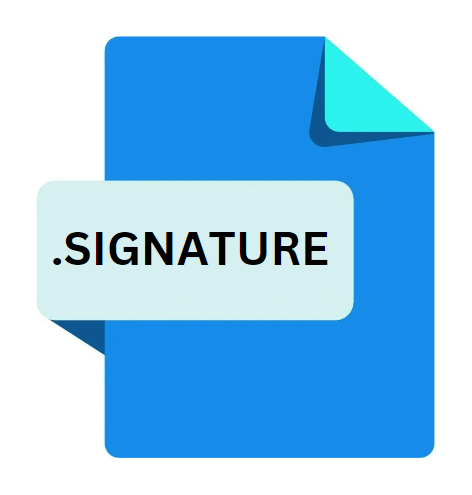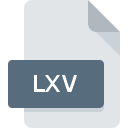.SIGNATURE File Extension

e-Filing Digital Signature File
| Developer | Government of India |
| Popularity | |
| Category | Encoded Files |
| Format | .SIGNATURE |
| Cross Platform | Update Soon |
What is an SIGNATURE file?
.SIGNATURE files are associated with electronic filing systems and are primarily used for storing digital signatures.
A digital signature is a cryptographic mechanism that verifies the authenticity and integrity of electronic documents or messages.
It provides assurance that the document has not been tampered with and originates from the purported sender.
In e-filing systems, such as those used for tax returns, legal documents, or other forms of electronic submissions, .SIGNATURE files play a crucial role in ensuring the validity and legality of the submitted documents.
More Information.
The concept of digital signatures dates back to the 1970s, with the development of cryptographic techniques for securing electronic communications.
It wasn’t until the advent of modern computing and the internet that digital signatures became practical for widespread use.
The initial purpose of .SIGNATURE files were to provide a standardized format for storing digital signatures within electronic documents.
This allowed for interoperability between different systems and applications, ensuring that digitally signed documents could be verified and processed reliably across various platforms.
Origin Of This File.
The origin of .SIGNATURE files can be traced back to the evolution of digital signatures and the need for a standardized format to encapsulate them.
As digital transactions became more prevalent, particularly in sectors requiring secure document exchange, the demand for a reliable method of digital authentication grew.
File Structure Technical Specification.
.SIGNATURE files typically consist of encoded data representing the digital signature, along with metadata such as the signer’s identity, the date and time of signing, and any additional authentication information.
The technical specification of .SIGNATURE files may vary depending on the cryptographic algorithms and standards used for digital signatures.
Commonly employed algorithms include RSA (Rivest-Shamir-Adleman), DSA (Digital Signature Algorithm), and ECDSA (Elliptic Curve Digital Signature Algorithm).
The structure of a .SIGNATURE file may resemble a binary or hexadecimal format, optimized for efficiency and cryptographic security.
It often includes header information to indicate the file type and version, followed by the signature data itself and any associated metadata.
How to Convert the File?
Converting .SIGNATURE files between different formats or standards may be necessary to ensure compatibility with various e-filing systems or applications.
Several software tools and libraries are available for converting between different digital signature formats, such as PKCS#7, XMLDSig, or Adobe PDF signatures.
The conversion process typically involves extracting the signature data from the .SIGNATURE file, reformatting it according to the desired standard, and generating a new signature using the appropriate cryptographic algorithms and parameters.
Advantages And Disadvantages.
Advantages:
- Enhanced Security: Digital signatures provide a high level of security, significantly reducing the risk of document tampering or forgery.
- Legally Binding: In many jurisdictions, digitally signed documents carry the same legal weight as their paper counterparts, making them suitable for formal transactions and contracts.
- Efficiency: E-filing systems streamline the document submission process, eliminating the need for physical paperwork and reducing administrative overhead.
Disadvantages:
- Dependency on Technology: The validity of digital signatures relies on the underlying cryptographic infrastructure and the security of the signing keys. Any vulnerabilities in these components could compromise the integrity of the signatures.
- Compatibility Issues: Different e-filing systems may use proprietary or incompatible formats for .SIGNATURE files, potentially leading to interoperability issues.
- Regulatory Compliance: Compliance with legal and regulatory requirements regarding digital signatures may vary between jurisdictions, requiring careful consideration to ensure legal validity.
How to Open SIGNATURE?
Open In Windows
- On Windows, you can use applications like Adobe Acrobat Reader or Microsoft Office to open .SIGNATURE files embedded within PDF documents or other supported file formats.
Open In Linux
- Linux users can utilize open-source software like Evince or Okular for viewing .SIGNATURE files within PDF documents or other compatible formats.
Open In MAC
- macOS includes built-in support for digital signatures in applications like Preview and Adobe Acrobat Reader. Simply double-clicking on a .SIGNATURE file should open it in the default application.













